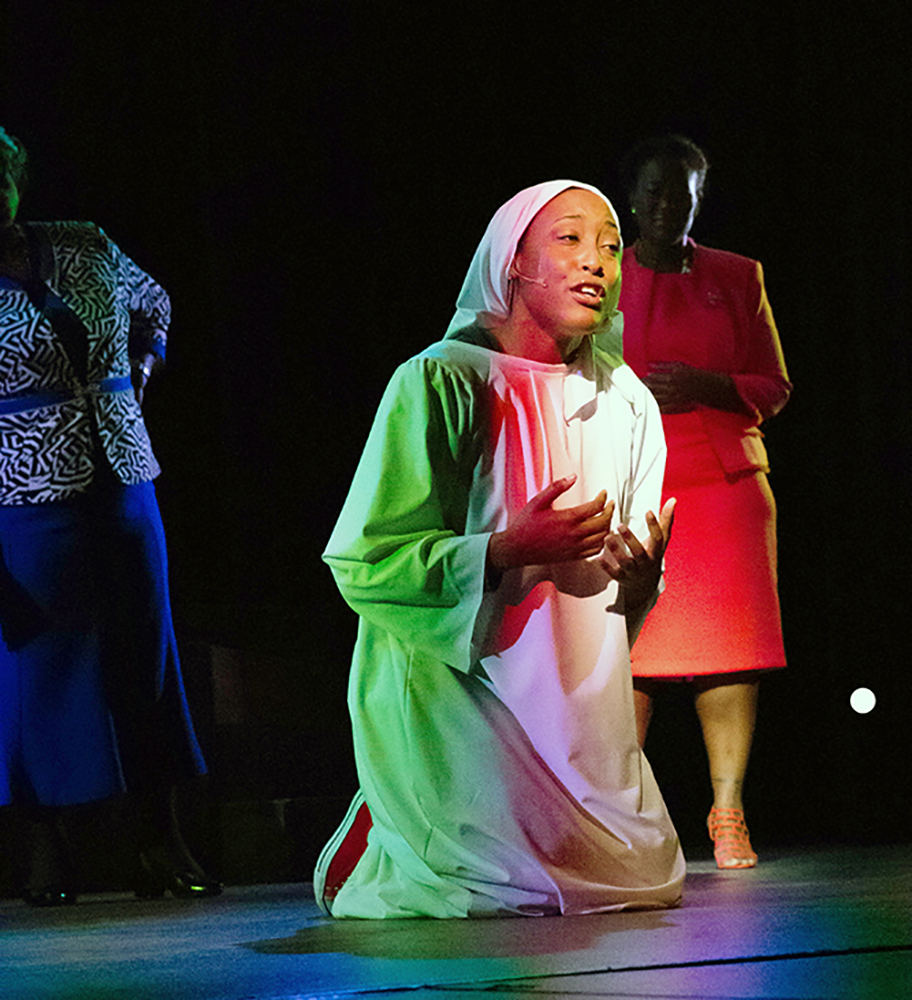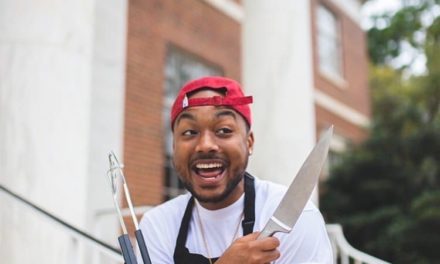Photo by Brenna Lila Jane Berry-Stewart, contributed by Raleigh Little Theatre
Lynnette Barber as Mother Shaw, Chelsey Moore as Yolanda, LaToya Smith as Jeanette
Anahzsa Jones | Editor-in-Chief
When I received the invitation to see ”Crowns” at Raleigh Little Theatre, I was thrilled. I hadn’t heard of it before, but I’ve learned by now that this little theatre is full of big surprises, so I just assumed the show would be great. I was wrong. The show was absolutely amazing.
“Crowns,” written by Regina Taylor and adapted from the book by Michael Cunningham and Craig Marberry, is the story of Yolanda, a Brooklyn teenager sent to live with her grandmother in South Carolina after the death of her brother. We see her journey to understand herself and the people she finds herself surrounded by through song and the ancient tradition of storytelling.
“Crowns” is also the story of African-American people. Through the stories of the five women who take Yolanda under their collective wing, we get to see little slices of southern black America, from the ring-shout in slave churches to the civil rights movement to early Sunday mornings picking out hats with grandma.
For some of us, it was learning something entirely new, and for others, it was like hearing your own story told on stage. For LaToya Smith, an opera singer who plays the part of Jeanette, it was like stepping back into church. “When we talk about these women and we talk about these churches, I mean, I’ve seen these women, I’ve seen the hats, I’ve seen the fans. We still have the fans with the sticks. This is our history. The whole message is there; this is our history.”
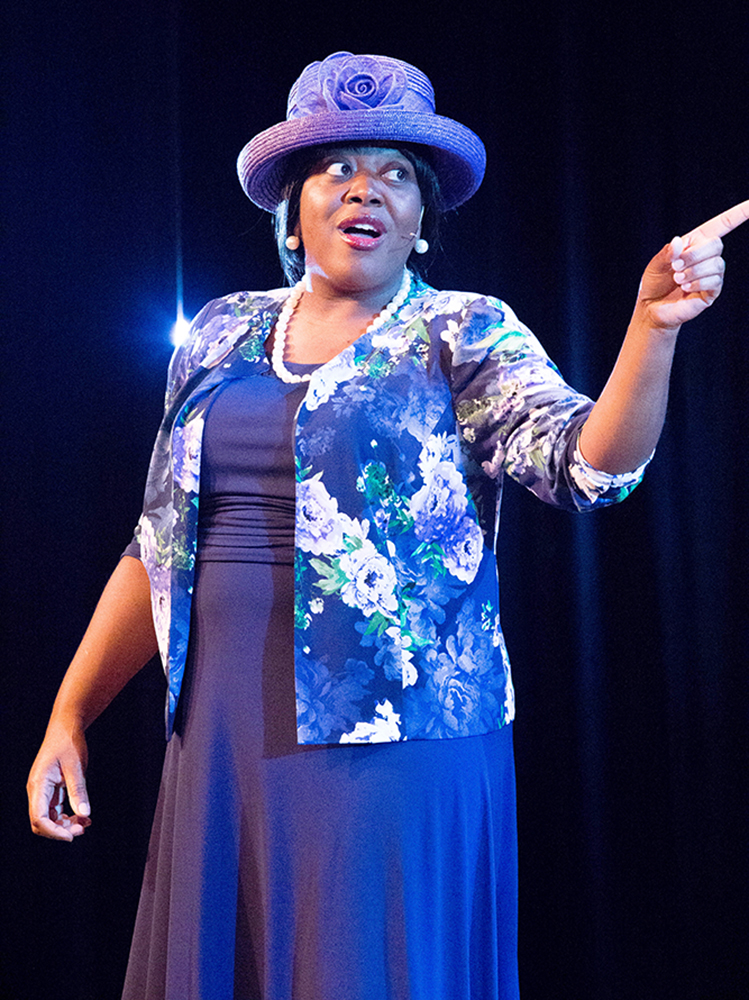
Photo by Brenna Lila Jane Berry-Stewart, contributed by Raleigh Little Theatre
India Williams as Mabel
Joshua Johnson, who plays the man (literally every man on stage), emphasized the faith and religion aspect of the show. He felt the biggest message was “that no matter what you have on, God is still bigger than anything that you could face or anything you encounter and what we need to do is not just pass down traditions of the hats, but traditions of God.”
The show saw a lot of community engagement, due in part to the competition they held for the show. The competition, sponsored by Arts Now, asked for a photo of contestants favorite church hat and up to 500 words on why it was important to them. This gallery, with pictures and the complete entries, can be seen in the lobby of Cantey V. Sutton Theatre where the show is housed. There were six winners, and each of them gave insight, not just into their personal crowns, but to the culture of crowns everywhere.
For Elizabeth Lewis, her crown was worn out of a sense of duty. “When I think of a crown the first thing that comes to my mind is Christ,” she wrote. “Like all the women in my life: my mother, grandmother, great grandmother and aunts wearing a hat to church was not only a requirement but a necessity… In order for a woman to be completely elegant and in her haute couture a beautiful and majestic crown is worn.”
For others, hats were a tool of transformation. Edith Berry wrote that, “It was an approach to change from wearing the drab maid uniforms. Women were transformed of their demeanor in adorning a hat on their heads. The more elaborate in style and size, it created a social status among their peers.”
Brenda High Sanders, another contest winner, recalls how hats were used for concealment. “Beauticians had some of the biggest and most beautiful hats. Later in life I learned that their hats hid their hair because they were too tired to fix it after working on all their customers. Lord only knows what’s going on under a hat.”
To Evelyn Castleberry, her hats aren’t just for her, but they are for everyone who sees her in her bright and colorful crown. “There is too much sadness and tragedy in the world today,” she wrote. “If I can give anyone a moment of happiness or a smile, my day is made. I’ll keep on wearing my hats.”
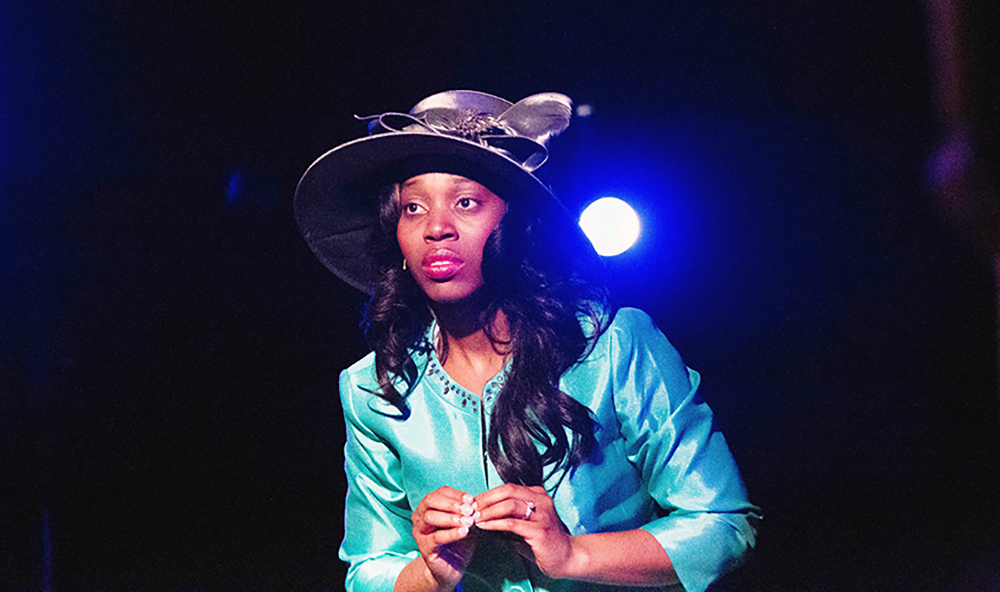
Photo by Brenna Lila Jane Berry-Stewart, contributed by Raleigh Little Theatre
Chanda Branch as Velma
And while the hats, both on the stage and in the audience, were beautiful to behold, my favorite part was the music. All gospel music is meant to convey emotion. But putting traditional gospel songs in the framework of this show gave them new depth and meaning. One of the songs that brought tears to my eyes — yes, there was more than one — was, oddly enough, about joy. Through the voices and the clapping and shouting, through the audience joining in, the show provides an atmosphere of oneness and community.
For Chelsey Moore, the actress who played Yolanda, that oneness was the most important part. “The most important message would be that we all come from different walks of life, but really we’re all the same. It takes a village to raise a child, so really we’re all connected in some way.”
Johnson too, pointed out that it’s more than the hats that matter in the show. “It wasn’t always about the hat when Mother Shaw was trying to teach Yolanda. It was also about getting her spirit right too. It brings a deeper meaning than just, you know, hats on Sunday,” Johnson said.
And while that’s true, the hats act as a bridge, a gateway between cultures. They’re big, they’re pretty and they’re something we all understand. Some more than others. Evelyn Castleberry also wrote, “I am a 90 year old white woman, but I heartily agree with the countless black women who would rather attend church naked than hatless.”
While, as a millennial, I most certainly am not that into the hats — I’ll take clothes over hats any day — I certainly agree that these crowns are an important way to tell the stories that need to be told if we’re going to understand culture. Not just our own, but anyone’s.
Charles Phaneuf, the executive director of RLT, recounted a conversation with Patrick Torres, the artistic director, in which Torres said, “With everything that’s happening in the world right now, how lucky we are that we get to share these spaces where we get to be together and to celebrate culture.”
And that’s what this show is; a celebration of African-American culture through the crowns the women wear on their heads.
From the northern African kofia to the elaborate Sunday hats worn by the church mothers, this play answers the question of “Why?” Why do these traditions exist, and why should we continue them?
As Yolanda says, “African Americans do very African things without even knowing it.” For some, their crown is a way to stay connected to their culture. For others, it’s worn to honor their God and their family traditions, and for some it’s a way to make a statement.
No matter what your reason for adorning your head with a crown, or even if you don’t, this show is sure to give you at least a little bit of “Hattitude.” You’ll hear classics like “I Am On the Battlefield for My Lord” and “His Eye is On the Sparrow,” and I challenge you not to sing and clap along.
“If you miss this, you’re missing something special. You need to get your tickets.” That’s the last thing Johnson made sure to tell me, and I couldn’t agree more. “Crowns” will be running until Sept. 17, so if I were you, I’d get my tickets now. Bring a friend, bring your favorite crown, and bring yourself to RLT to see this fantastic show.
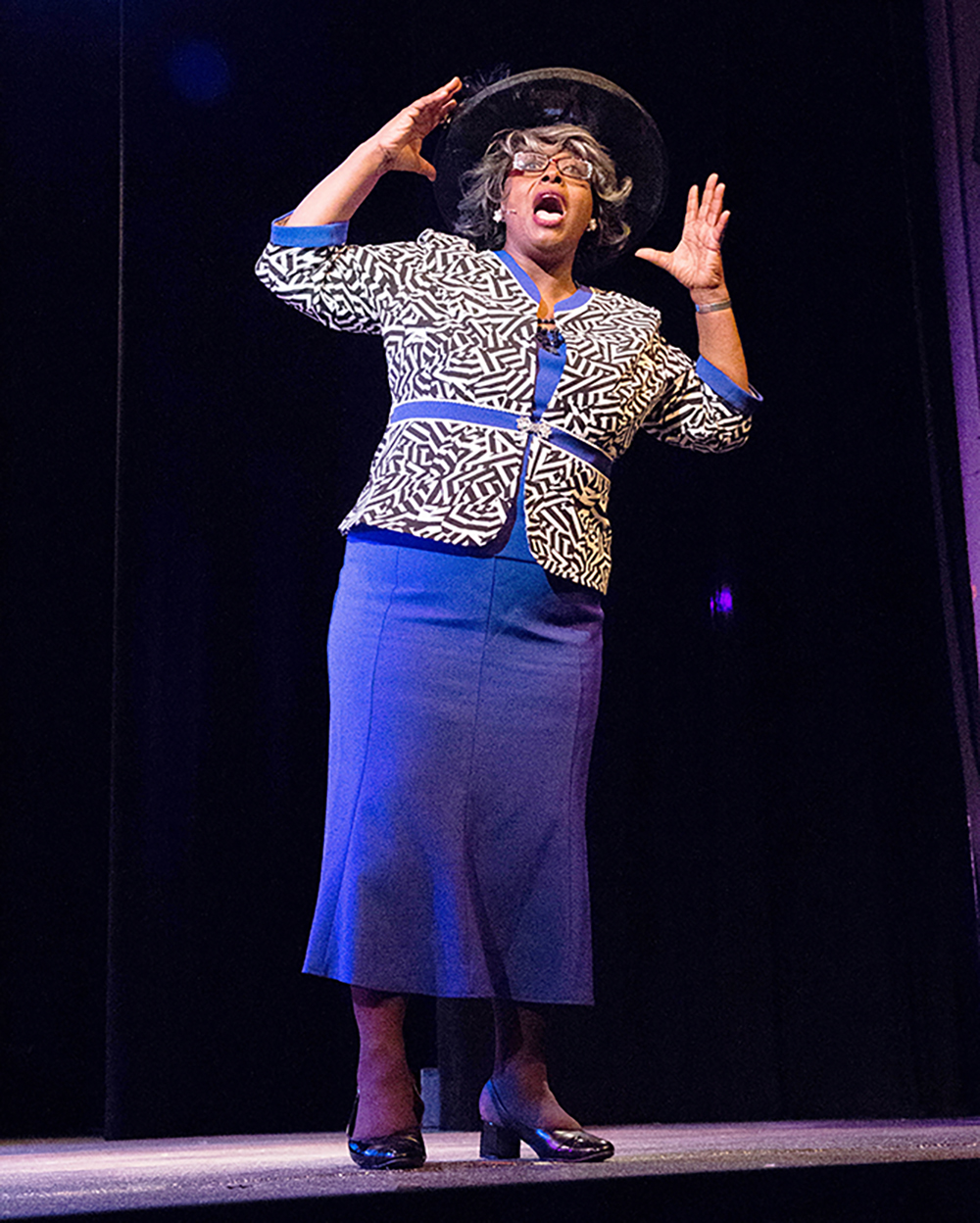
Photo by Brenna Lila Jane Berry-Stewart, contributed by Raleigh Little Theatre
Lynnette Barber as Mother Shaw

